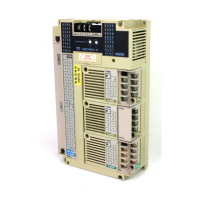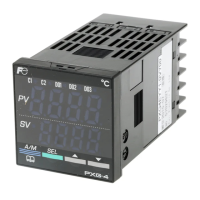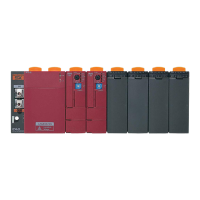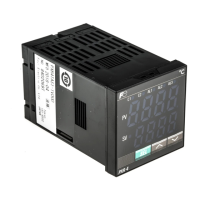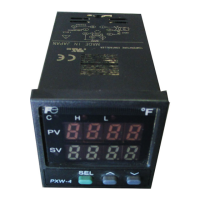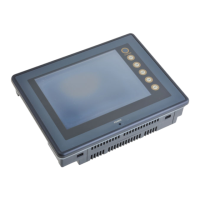5-13
MHT260a (Engl.)
■ Related items
(1) Parameter setting
Origin return action depends on basic para. setting.
Basic parameter 72 to 78
Para. Name Setting range Initial value Change
72 Origin return direction 0 : Positive direcrtion
1 : Negative direction
0 Power
73 Z-phase detection valid/invalid 0 : Valid
1 : Invalid
0 Power
74 Origin LS logic 0 : NO contact
1 : NC contact
0Always
75 Origin return speed 0.01 to max. speed [r/min]
(in 0.01 step)
500.00 Always
76 Origin detection creep speed 0.01 to max. speed [r/min]
(in 0.01 step)
50.00 Always
77 Origin shift quantity 1 to 2000000 (in 1 step)
[x unit q’ty]
5000 Always
78 2nd origin 2 to max. number of division (in 1 step) 2 Power
After the setting change of the basic para. 71, 72, and 78, power supply need be turned on again.
(2) Origin return action
At the ON edge of [ORG] signal, the following operations are automatically carried out.
(a) At the ON edge of [ORG] signal, motor rotation start at the origin return speed (basic para. 75) in the origin return direction (basic para.
72).
(b) When the [LS] signal turns from off to on, speed is reduced to the origin detection creep speed (basic para. 76). While [LS] on, motor runs
at constant speed.
(c) The first Z-phase signal is detected, following the transfer point of [LS] signal from OFF edge to ON edge.
(d) The motor stops after rotating by the origin shift quantity (basic para. 77) from the detection of Z-phase signal.
(e) The indexing end [WPSET] signal turns on, with the stopped position as the No.1 station number. The origin return end signal as the
control output signal turns on.
With the Z-phase input invalid selected in the Z-phase valid/invalid (basic para. 73), motor can be stopped after running by the origin shift
quantity from the ON edge to OFF edge of [LS] signal.
The on/off status of [LS] signal can be inverted using the origin LS logic (basic para. 74).
■ Origin return
At the ON edge of [ORG] signal, the aforementioned operations (a) through (e) are carried out.
The origin return action can be carried out again, regardless of the on/off status of the origin return end signal.

